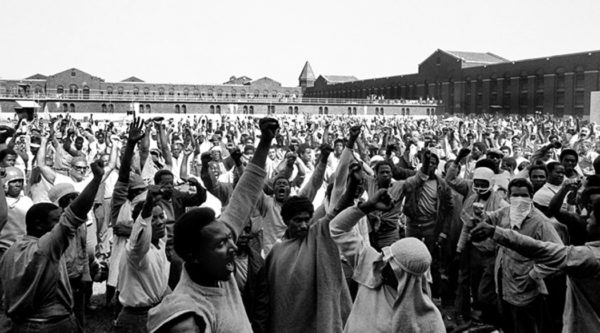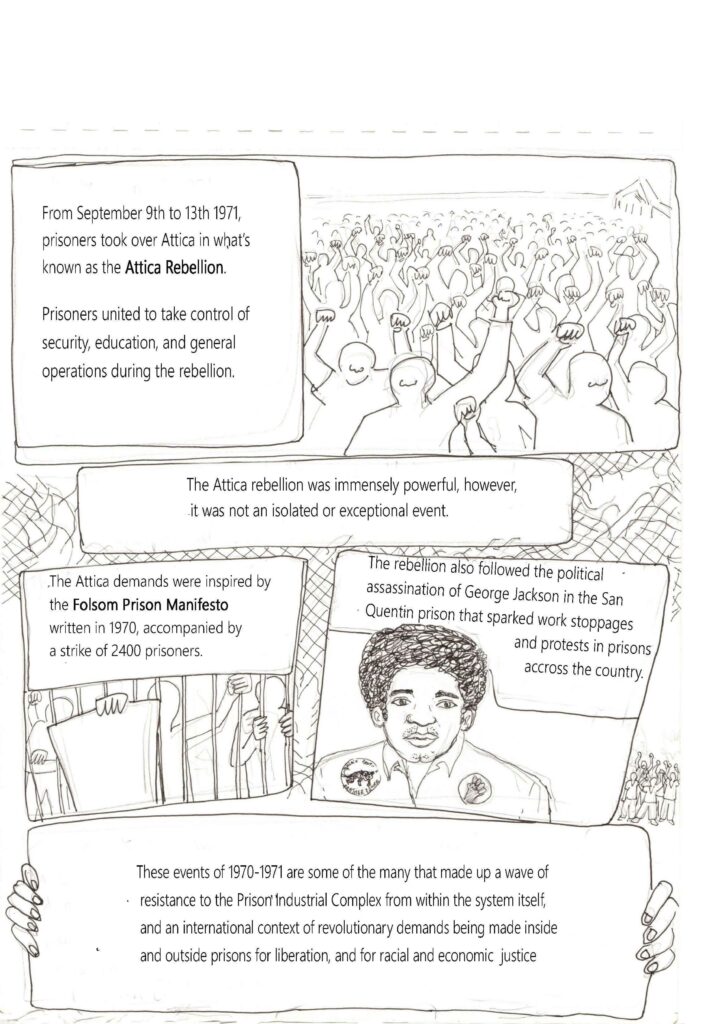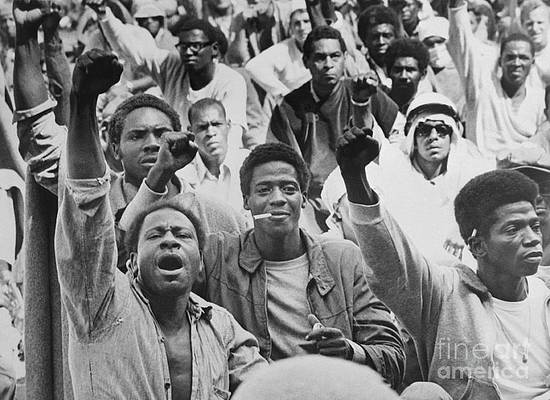Critical Resistance commemorates the anniversary of the Attica Rebellion, when Black, Native and Latino prisoners rose up against Attica Prison in upstate New York, and released a powerful set of demands.

At the time of the rebellion, the US prison population was less than 200,000. On the fourth day of the prisoner-led takeover of Attica, September 13, 1971, then-Governor Nelson Rockefeller deployed New York State Troopers to set murderous siege on the prison. A campaign of sustained terror and repression to restore the power of guards and administrators at Attica followed. The systematic attack against the gains won by struggles inside and outside prison walls, which nourished the spirit of revolt in Attica and the broader prisoner movement of the period, parallels the rise of the prison industrial complex to where we stand today. Few people then imagined that the imprisoned population in the US would explode to 2.4 million.
The Attica Rebellion developed not only in response to conditions of dehumanizing racism and violence in the prison, but was strengthened by the confluence of imprisoned revolutionaries from Black liberation, Native and Puerto Rican anti-colonial, and anti-imperialist movements. The demands articulated by the Attica Liberation Faction, which were inspired by the Folsom Prison Manifesto written in California in 1970 and accompanied by 2,400 striking prisoners, unleashed an abolitionist imagination that continues to propel prisoner-led and abolitionist struggles up to today.
 From 2013-2014, Critical Resistance New York City (CRNYC) interviewed several Attica survivors formerly imprisoned at the prison. In 2016, to honor the 45th anniversary of the rebellion, CRNYC released a zine with illustrations by Anu Biswas, depicting these interviews and prisoners’ experiences of repression, resistance and social transformation. Through oral history, the Attica Interview Project sought to document the legacy of repression, survival and resistance at Attica, while using material to shape a broader narrative about the PIC and abolition, and fuel ongoing demands to close Attica, as CYNYC at the time was also working in the Beyond Attica coalition to close Attica once and for all.
From 2013-2014, Critical Resistance New York City (CRNYC) interviewed several Attica survivors formerly imprisoned at the prison. In 2016, to honor the 45th anniversary of the rebellion, CRNYC released a zine with illustrations by Anu Biswas, depicting these interviews and prisoners’ experiences of repression, resistance and social transformation. Through oral history, the Attica Interview Project sought to document the legacy of repression, survival and resistance at Attica, while using material to shape a broader narrative about the PIC and abolition, and fuel ongoing demands to close Attica, as CYNYC at the time was also working in the Beyond Attica coalition to close Attica once and for all.
The stories of resistance, resilience, and struggle coming from the survivors of Attica and prisons across the country can offer not only a reminder of the history in which our movement is rooted, but a signal fire of which direction we should head. In the words of Attica Brother, LD Barkley:
The entire prison populace has set forth to change forever the ruthless brutalization and disregard for the lives of the prisoners here and throughout the United States. What has happened here is but the sound before the fury of those that are oppressed.”
Resources for Learning More About the Attica Rebellion
- “History is a weapon! Black August Resistance” letter from an imprisoned organizer, available through the Freedom Archives. (Freedom Archives has dozens of documents on Attica. See them all in an “Attica” search here).
- “Attica is All of Us” – Video, courtesy of Freedom Archives.
- “Improvising on Reality: The Roots of Prison Abolition,” by Liz Samuels, printed in The Hidden 1970’s: Histories of Radicalism, edited by Dan Berger.
- “Political Prisoners and Prisoners of War,” Masai Ehehosi, from the Breaking Down the Prison Industrial Complex video series.
- “Political Education and Resistance Inside,” Masai Ehehosi, from the Breaking Down the Prison Industrial Complex video series.

